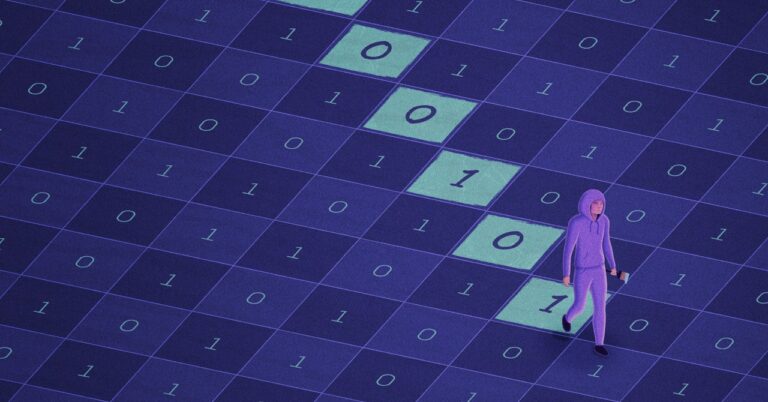Turing’s diagonalization proof is a model of this recreation the place the questions cycle by means of the infinite record of doable algorithms, repeatedly asking, “Can this algorithm resolve the issue that we wish to be incomputable?”
“They’re sort of endless questions,” Williams mentioned.
To win the sport, Turing needed to give you an issue the place the reply for every algorithm is not any. That meant figuring out a selected enter that causes the primary algorithm to offer the mistaken reply, one other enter that causes the second to fail, and so forth. He discovered that particular enter utilizing a trick much like the one Kurt Gödel had lately used to show that self-referential statements like “this assertion is unprovable” posed issues for the foundations of arithmetic.
The important thing perception was that any algorithm (or program) will be represented as a collection of zeros and ones. This implies, identical to within the error checking program instance, that an algorithm can take the code of one other algorithm as enter. In precept, an algorithm may even take its personal code as enter.
With this perception we will outline an incomputable drawback just like the one in Turing’s proof: “Given an enter sequence representing the code of an algorithm, the output is 1 if that algorithm produces 0 if its personal code is the enter; in any other case output 0.” Any algorithm that tries to resolve this drawback will produce the mistaken output on a minimum of one enter, specifically the enter equivalent to its personal code. That signifies that this perverse drawback can’t be solved by any algorithm.
What denial cannot do
Laptop scientists weren’t achieved with diagonalization but. In 1965, Juris Hartmanis and Richard Stearns tailored Turing’s argument to show that not all computable issues are created equal – some are intrinsically harder than others. That outcome launched the sphere of computational complexity idea, which research the problem of computational issues.
However complexity idea additionally revealed the boundaries of Turing’s opposing technique. In 1975, Theodore Baker, John Gill, and Robert Solovay proved that many open questions in complexity idea can by no means be solved by diagonalization alone. Chief amongst these is the well-known P versus NP drawback, which asks whether or not all issues with easy-to-check options are additionally straightforward to resolve with the fitting ingenious algorithm.
The blind spots of diagonalization are a direct consequence of the excessive stage of abstraction that makes it so highly effective. Turing’s proof didn’t introduce an incalculable drawback which may come up in follow; as a substitute, such an issue was invented on the spot. Different proofs of diagonalization are equally aloof from the actual world, so they can’t resolve questions the place real-world particulars matter.
“They course of calculations remotely,” Williams mentioned. “I think about a person who offers with viruses and approaches them by means of some glove field.”
The failure of diagonalization was an early indication that fixing the P versus NP drawback could be an extended journey. However regardless of its limitations, diagonalization stays one of the crucial vital instruments within the arsenal of complexity theorists. In 2011, Williams used it together with a number of different methods to show {that a} sure restricted computational mannequin couldn’t resolve some extraordinarily tough issues – a outcome that had eluded researchers for 25 years. It was removed from a P versus NP answer, but it surely nonetheless represented main progress.
If you wish to show that one thing is not doable, do not underestimate the ability of simply saying no.
Authentic story reprinted with permission from Quanta journal, an editorially unbiased publication of the Simons Basis whose mission is to advance public understanding of science by protecting analysis developments and traits in arithmetic and the bodily and life sciences.

